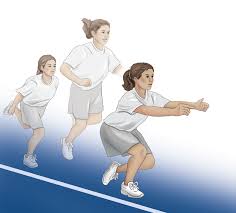Physical therapists work with people with all sorts of injuries. Some are work-related, others motor vehicle accidents, and some are due to active lifestyles. PT’s can be the ultimate decision-maker for athletes returning to sport training safely. Everyone knows someone who has had a surgery; therefore, you know and understand the differences after surgery and the sometimes long road to recovery post-surgery. With athletes, especially in youth sports, there is added competition and desire to return to play as soon as possible. As physical therapists, it is our job/occupation/profession to ensure that an athlete is ready to return to sport and compete and the level necessary of that sport.
Using a variety of tests and measures physical therapists can ensure proper sports participation and readiness. The test that is featured in this blog is the “Triple Hop for Distance.” The test is simple to set up and explain, but can be very difficult to perform. A measuring tape is placed on the ground and the athlete is asked to perform three hops on a single leg, as far as they can. A test is disqualified if the other foot touches the ground or if the athlete appears wildly off-balance between landing and jumping.
The goal is for the injured leg to score within 10% of the distance of the uninjured leg. In other words, if the normal left leg jump is 100 inches after all three jumps, then the goal is for the surgical right leg jump to achieve 90 inches. Research has shown that achieving within 10% difference or 90% of non-surgical leg demonstrates an 84% decreased risk of re-injury with return to sports (Grindem, 2016). Although there is always the potential for re-injury following surgery and PT, utilizing the “Triple Hop for Distance” test will effectively evaluate the athlete’s readiness to return to sport.
****See below video for the performance of Triple Hop for Distance by our most recent Premier Therapy athlete following her successful completion of R ACL surgery. First, she will perform with her left/non-surgical leg, then she will perform with her right/surgical leg.
The “Triple Hop for Distance” is an excellent test because it is comprised of jumping, landing, control, and balance, all of which can be applied to the individual’s sport. In almost every sport there is some degree of running, jumping, changing directions, balance and self-control that is necessary to perform at a high level. This test ensures the athlete controls his/her body weight through single leg balance. Catching and holding his/her weight and also generating enough force to jump off the single leg.
Grindem H, et al. (2016). Simple decision rules can reduce reinjury risk by 84 % after ACL reconstruction: the Delaware-Oslo ACL cohort study. British Journal of Sports Medicine, 50(13):804–8







